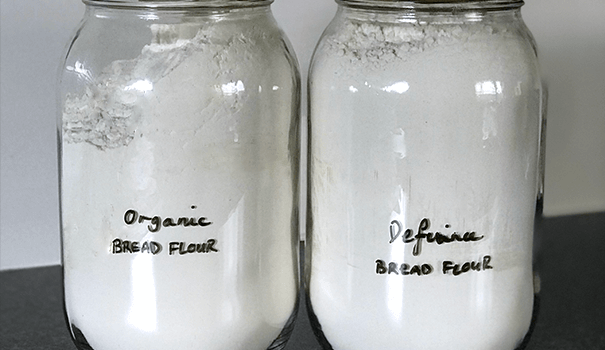Make your own bread mix!
Bread flour is often sold in bags of 5kg (or more) so you will need to store it in some kind of airtight container away from heat and sunlight. The easy way is to pre-measure enough flour and salt for each loaf and sealing each portion in individual containers or ziplock bags. Essentially, you make your own bread mix. Then, when you make your sourdough bread, it’s as easy as reaching into the pantry to pull out a container or bag and voila! Your flour and salt will be measured already!
This method will work for both traditional sourdough and the BLME Sourdough. It will also work for yeasted bread.
What makes this the easy way?
- Your flour needs to be kept in an airtight container to avoid pests and stay fresh, so you need to decant the flour from its packaging anyway
- Small containers of flour are easier to stack, store and lift
- It’s easy to see how many loaves you have left ‘in stock’
- It makes the final bread-making even easier – you may not even need to pull the scales out when making your dough. 🙂
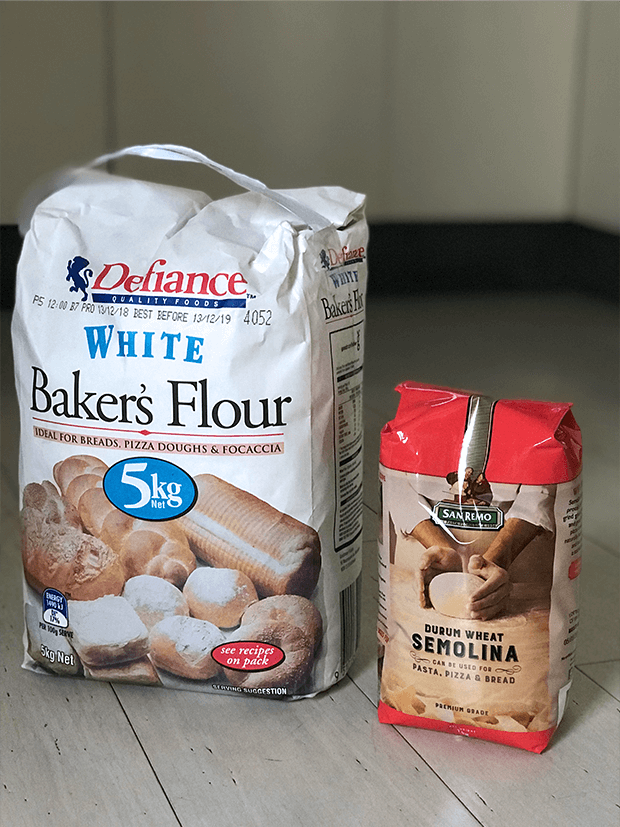
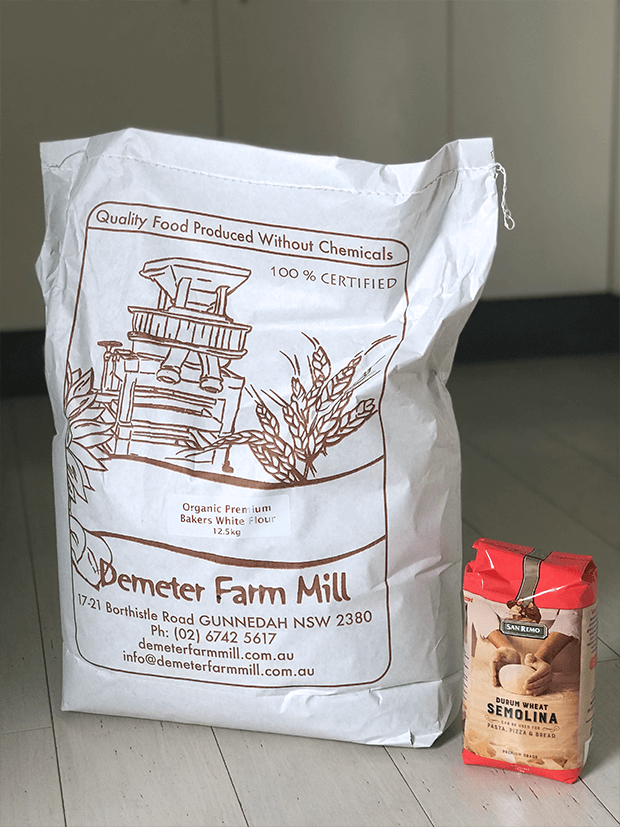
Where to store your flour
Flour should be stored in a clean, dry, cool environment such as your pantry.
If pantry space is not something you have the luxury of donating to a small store-house of bread flour, consider other cool, dry places such as your garage, basement or laundry. Just remember that you’re storing a food substance so keeping it adequately sealed is important.
What containers to use
I like using containers of the same size and shape due to the simplicity of weighing and storing them. They all weigh the same, so I don’t have to re-tare the scales, and they stack together well.
Using the same identical storage containers makes the weighing process a lot faster. You only need to zero the scales once – when you start.*
Plastic containers or glass jars
My containers are flat and plastic. They are traditionally used for storing a sweet slice. I chose them because they were inexpensive and they have the widest opening possible which makes filling them with flour super easy.
They fit the area I have available for storage perfectly. Jars will take up more room, since they’re round and leave a lot of dead space between themselves and the jar next to them, but they do look nice if you have space.
Ziplock bags
Not so great for cupboard storage but ziplock bags are best for drawers. Being a soft, they don’t stack or stand but will happily mold into each other in a drawer or large storage-container.
Ziplock bags are also a great travel solution, making it possible to bake sourdough bread on holiday. If you take your BLME Sourdough Starter… and make sure you will have an oven, you will only need to add water!
I haven’t tried making sourdough whilst camping, but if you would like to give it a go, contact me and I will send you a free kit in exchange for feedback and campfire instructions. 😉
Time
I make a double pre-mix for making two loaves at a time. It takes about 20 minutes to decant 12.5kg bread flour with salt into 14 containers.
Since I make two loaves at a time, I measure out a double portion of the BLME bread mix into each container. It takes about 20 minutes to decant 12.5kg bread flour with salt into 14 containers.
Method
AN IMPORTANT NOTE: Keep enough bread flour without the salt for making and/or feeding your starter and store it separately. This should be around 20% of your total flour purchase.
Know your go-to bread recipe
If it’s the BLME Sourdough, skip the rest of this post and find out how to make your own bread mix.
Choose
Decide if you are making single or double loaf mixes and choose containers to suit the volume of flour you need to store in each.
Prepare
Grab your containers, scales, scoop, salt and flour
Dance
Crank up some music if you wish! 😉
Using teaspoons, cups etc to measure
Measure
If you use volume for your recipe, measure out the correct portion of flour and salt, place it into each container.
Seal
Do this for 80% of your flour and close the containers tightly and store.
Store
Place the remaining 20% of the bread flour in a different container so that it doesn’t get mixed up with the bread mix. Seal tightly and store alongside your bread mix.
Using scales to measure
Tare*
Place your first container onto the scales and zero the scales.
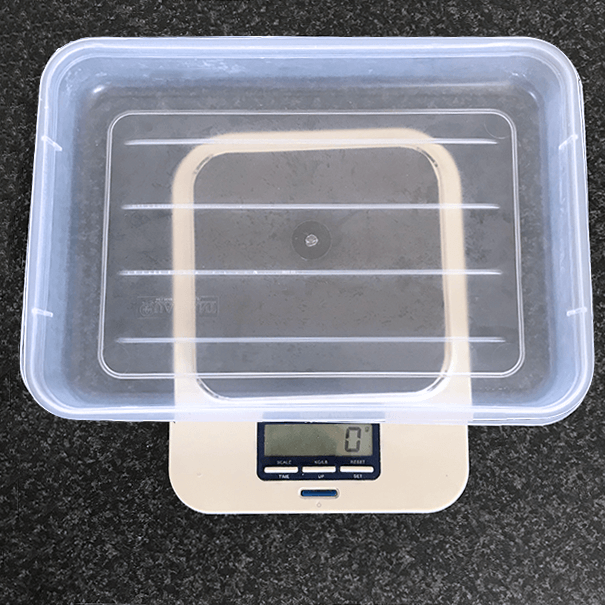
Weigh
Measure the correct amount of flour directly into your container. Below is my measurement for 2 loaves of traditional sourdough – made easy.
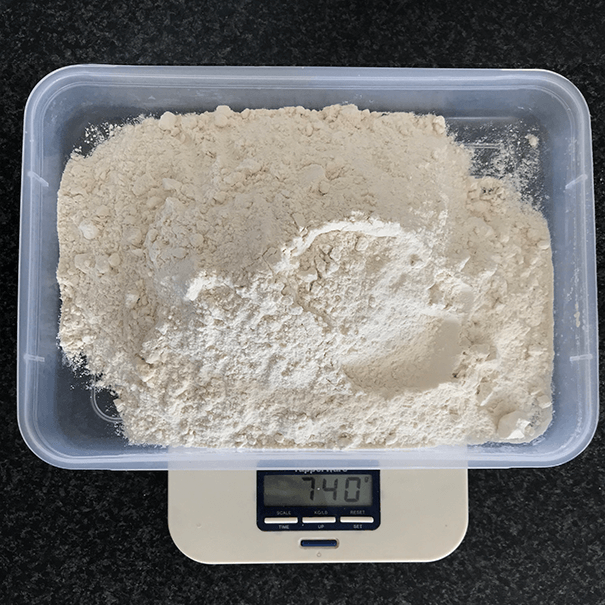
Before you zero your scales to add the salt and have to re-zero again for the next container, consider these two easier options:
1.
Measure all your flour first without re-zeroing your scales then, using one of your containers filled with flour, zero your scales again and add the salt measurement to each (e.g your scales will show 16g)
OR
2.
Know what your total weight should be (flour + salt = total weight). E.G 740g bread flour + 16g salt = 756g.
Once you have the flour measurement, add salt until you reach the total weight. You don’t need to zero the scales again at all. This is the method I use because it’s the easiest.
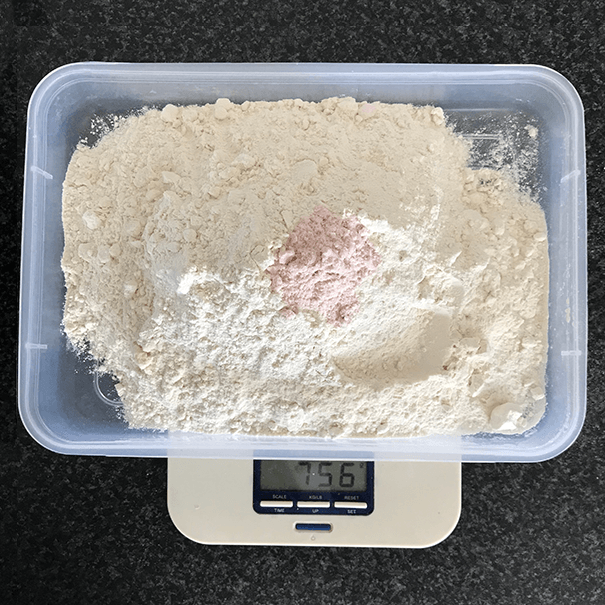
Seal
Close the container tightly and repeat the process until 80% of your flour is decanted and ready to store.
Store
Place the remaining 20% of your flour in a different container so that it doesn’t get mixed up with the bread mix. Seal tightly and store alongside your bread mix.
Remember
Keep aside 20% of flour without any salt for feeding your starter.
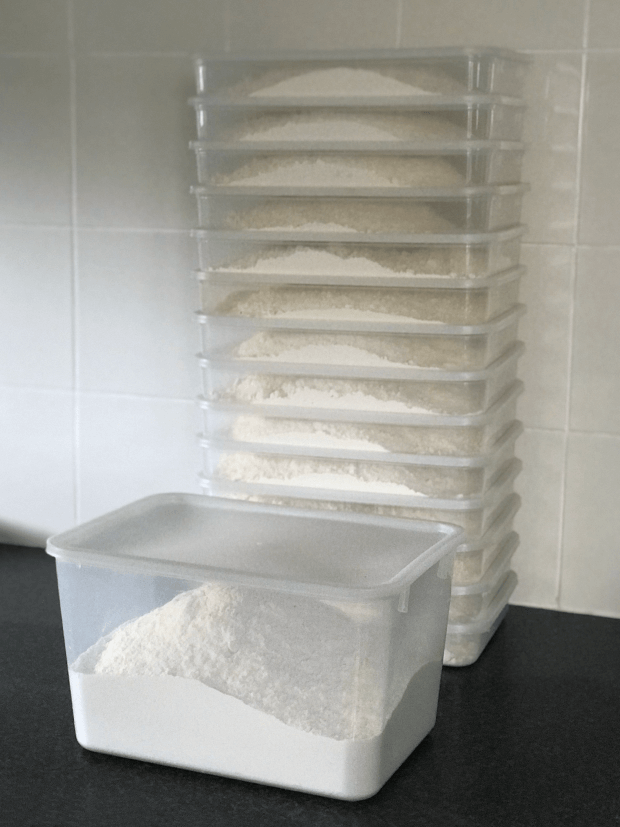
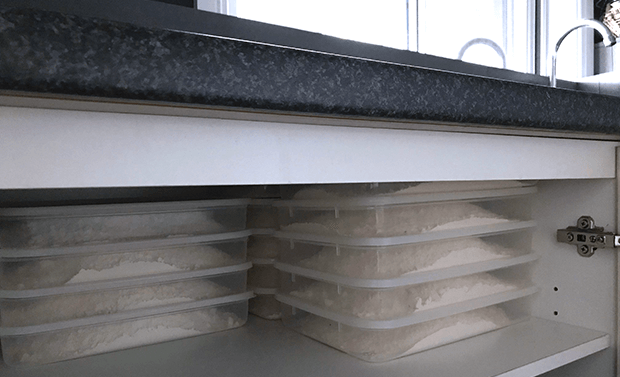
*Using all the same containers, means they are all the same weight, so you won’t have to tare the scales each time. When one is done, you can take it off and place the next one on and go again.

